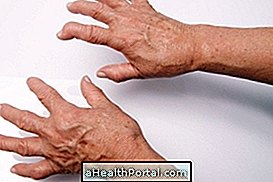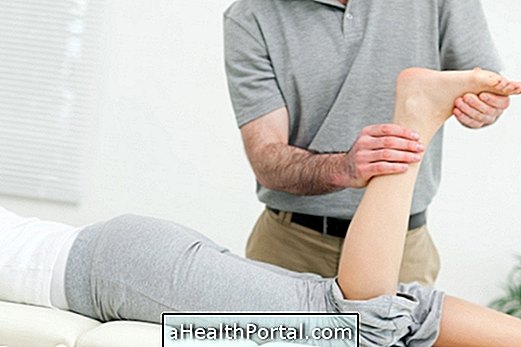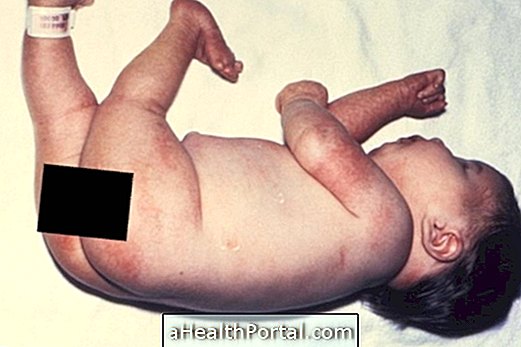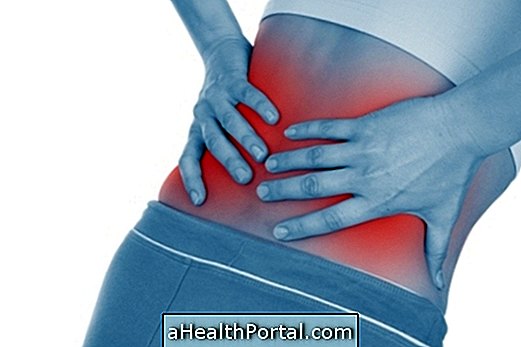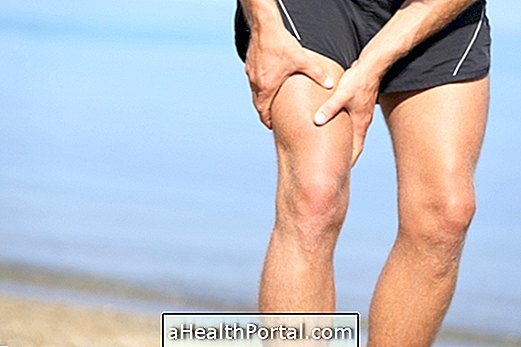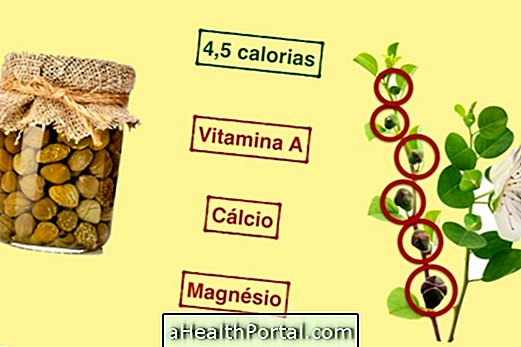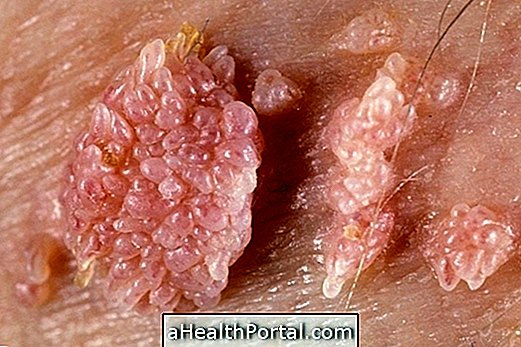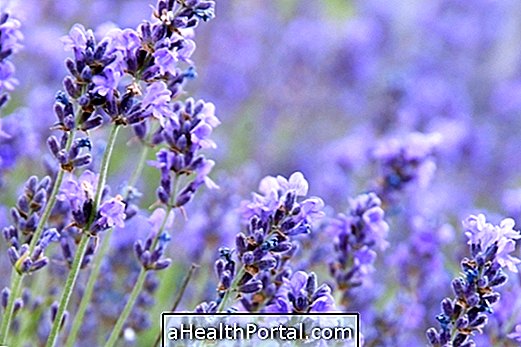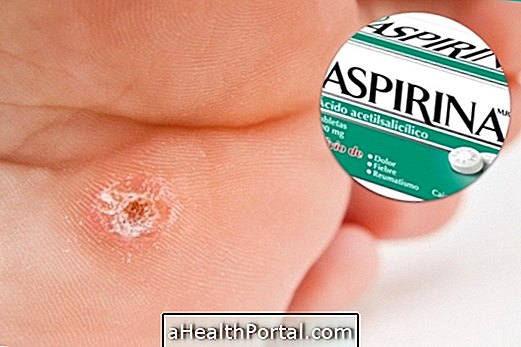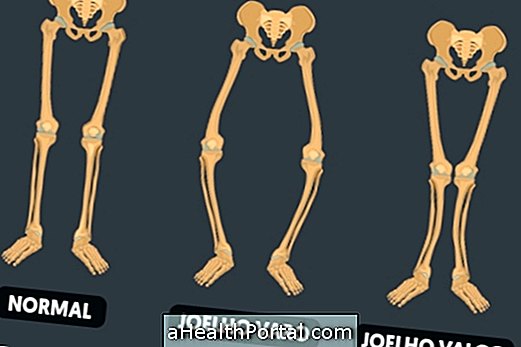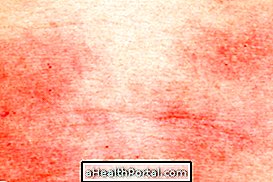Spinal arthrosis, known as spinal osteoarthritis or spondylarthrosis, is the wear and tear of the cartilage of the spinal joints, which causes symptoms such as pain and difficulty to move the back, and may be caused by changes in age as well as by genetic alterations or by making wrong movements with the back.
The symptoms of arthrosis are different in each person, with intensities ranging from mild to severe, and may even cause limitations to daily and work activities. Therefore, in some cases, osteoarthritis may be an indication of withdrawal from work or retirement, but this only rarely occurs, because when the person treats adequately, the symptoms are usually well controlled.
Wear can occur in any region of the spine, being more common in the lumbar and cervical regions, and although not curable, treatment can greatly improve a person's symptoms and quality of life, including the use of analgesic, anti inflammatory drugs, as well as surgery options for difficult cases.
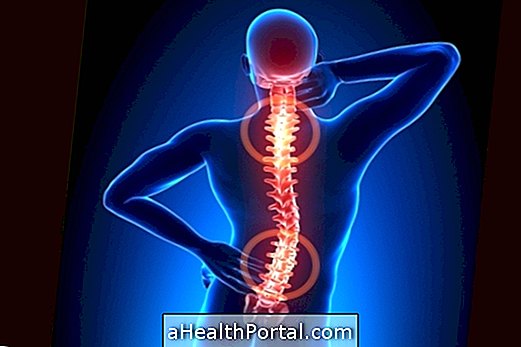
Main symptoms
Cartilage is important for cushioning the impact and reducing friction between the ends of the bones, and when there is osteoarthritis, there may be symptoms such as:
- Pain in the spine that worsens with movement;
- Difficulty in moving the region due to pain;
- There may be a tingling sensation or numbness in the neck or arms when there is cervical arthrosis;
- There may be a tingling sensation or numbness in the legs when there is lumbar arthrosis.
With an attempt to recover bone erosion by the body, small tips can also be formed at the extremities, known as parrot beaks, that clamp or tighten the nerves that pass in the region, such as the sciatic, and cause a lot of pain.
In addition, the compression of the cartilage discs of the spine, called intervertebral discs, can cause its bulging out of the spine, giving rise to disc herniation. Watch the following video and learn all about herniated disc:

How to confirm the diagnosis
The diagnosis of spinal arthrosis is made from the symptoms presented and the physical examination done by the physician, together with imaging tests such as x-ray of the spine.
In some cases, an MRI scan of the spine may be needed to identify changes such as herniated disc or small deformities not seen on the x-ray.
Causes of arthrosis in the spine
The arthrosis of the spine has genetic and hereditary influences, however, there is a greater risk of developing the alterations by:
- Natural wear and tear of the spinal joints due to age;
- Repetitive and wrong movements, such as carrying heavy objects in the wrong position;
- Excessive exercise;
- Spinal injuries, caused by injuries and accidents.
In this way, it is very important that the practice of physical activity is guided by a professional, and that the repetitive movements or effort made in the work are done with the maintenance of a correct posture, avoiding the development of a arthrosis. Check out the habits that impair the spine and how to avoid it.

How is the treatment done?
Spondyloarthrosis has no cure, but its correct treatment is very important to remove symptoms and improve the quality of life of the person with medicines such as:
- Analgesics, such as Paracetamol or Dipyrone, 2 to 4 times a day, or when you have pain;
- Opioids, which are more potent analgesics, such as Codeine, Tramadol or, even, Morphine, for moderate to severe pain;
- Glucosamine Sulfate or Chondroitin, which are dietary supplements that can aid the regeneration of cartilage;
- Anti-inflammatories, such as Ketoprofen or Ibuprofen, in tablet or ointments, should be used for a limited time, according to medical advice, as its continuous use can be harmful to organs such as the stomach and kidneys;
- Anesthetics and injectable corticoids, called infiltrations or blockages, are injected into the joint for better local control of pain, in cases of difficult control.
These treatments can be done in periods when symptoms are present, or can be done for a lifetime, for those with persistent symptoms, and should be guided by the general practitioner, orthopedist, or rheumatologist.
Surgery Options
Surgeries of the spine are indicated by the orthopedist or neurosurgeon only in some cases where there has been no improvement in symptoms with previous treatments because of their small risk of causing complications such as bleeding, infection or spinal injury.
These surgical procedures consist of radiofrequency, conventional or minimally invasive surgery, designed to correct deformities, decrease symptoms and cause the person with this disease to lead a life with minimal limitations. Find out what care you need after a spine surgery.
Physiotherapy treatment
Physical therapy is a very important treatment for those with spinal arthrosis, since the exercises and manipulations done by the physiotherapist help to decrease inflammation, align the joints and strengthen the muscles, so that there is less overload and pain in the spine.
Practicing physical activities is also important for toning muscles and maintaining joint stability, and the best types of exercises are swimming and water aerobics as water activities work the muscles with the least impact to the joints. Check how the physiotherapy for arthrosis is done.
